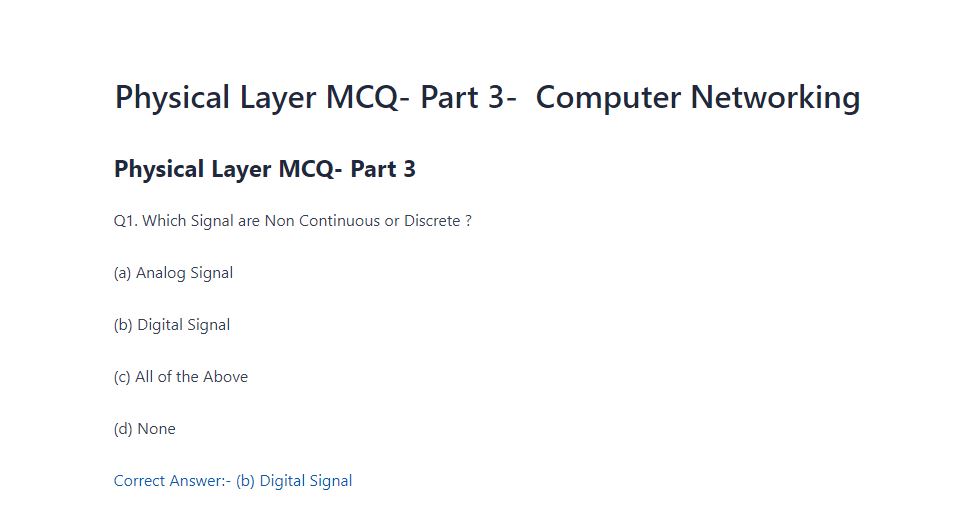A Database Management System (DBMS) operates at different levels to manage data efficiently. These levels represent how data is stored, organized, and processed. The three primary levels of database architecture follow the ANSI-SPARC (American National Standards Institute – Standards Planning and Requirements Committee) model, which defines:
- Internal Level (Physical Level)
- Conceptual Level (Logical Level)
- External Level (View Level)
1. Internal Level (Physical Level)
🔹 Definition: The lowest level of the database, responsible for physical storage of data on hardware (disks, SSDs).
🔹 Function:
- Defines how data is stored (file organization, indexing, compression).
- Deals with memory management and access speed.
- Invisible to users and developers, handled by the DBMS.
🔹 Example: Storing data as binary files, B-Trees, or hash indexes on disk.
2. Conceptual Level (Logical Level)
🔹 Definition: The middle level that defines the overall structure of the database.
🔹 Function:
- Specifies tables, relationships, constraints, and data types.
- Ensures data integrity and consistency.
- Hides physical storage details but provides a structured view.
🔹 Example: - A table Employees (id, name, salary, department_id).
- Relationships between Employees and Departments tables.
3. External Level (View Level)
🔹 Definition: The highest level that defines how users interact with data through views and interfaces.
🔹 Function:
- Provides customized views of data for different users.
- Controls access permissions (e.g., a manager sees all salaries, but employees see only their own).
- Simplifies complex data structures for user-friendly access.
🔹 Example: - A Finance Department view that shows only salary-related data.
- A Customer view that hides internal IDs and only displays names and purchases.
Diagram: Database Levels

Comparison Table: Database Levels
| Level | Also Called | Focus | Who Uses It? | Example |
|---|---|---|---|---|
| Internal Level | Physical Level | How data is stored | DBMS, Admins | Files, indexes on disk |
| Conceptual Level | Logical Level | How data is structured | Developers, Designers | Tables, relationships |
| External Level | View Level | How data is accessed | Users, Analysts | Reports, views |


A further issue is really that video gaming has become one of the all-time most important forms of entertainment for people of all ages. Kids play video games, plus adults do, too. The actual XBox 360 is probably the favorite gaming systems for many who love to have hundreds of games available to them, in addition to who like to learn live with other folks all over the world. Many thanks for sharing your thinking.
One other issue is that if you are in a problem where you don’t have a co-signer then you may genuinely wish to try to wear out all of your financing options. You can find many funds and other scholarships that will supply you with money to help with institution expenses. Thank you for the post.
I have been browsing online more than 3 hours today, yet I never found any interesting article like yours. It抯 pretty worth enough for me. Personally, if all web owners and bloggers made good content as you did, the net will be a lot more useful than ever before.
My spouse and i were very thankful Chris could complete his inquiry from your precious recommendations he made while using the blog. It is now and again perplexing to just possibly be giving freely guides which often the others may have been making money from. And now we understand we now have you to appreciate because of that. The explanations you’ve made, the straightforward website navigation, the relationships you make it easier to create – it’s everything awesome, and it’s really aiding our son in addition to us consider that the topic is enjoyable, and that is quite indispensable. Thanks for all the pieces!
As a Newbie, I am always searching online for articles that can benefit me. Thank you
Thanks for your strategies. One thing I have noticed is that often banks and also financial institutions know the spending practices of consumers as well as understand that plenty of people max away their real credit cards around the holidays. They prudently take advantage of that fact and commence flooding your inbox along with snail-mail box by using hundreds of no-interest APR card offers just after the holiday season concludes. Knowing that should you be like 98 of American public, you’ll rush at the opportunity to consolidate personal credit card debt and move balances towards 0 apr interest rates credit cards.
Hey There. I discovered your weblog using msn. This is a very smartly written article. I will make sure to bookmark it and return to read more of your helpful info. Thanks for the post. I抣l certainly comeback.
You helped me a lot with this post. http://www.kayswell.com I love the subject and I hope you continue to write excellent articles like this.